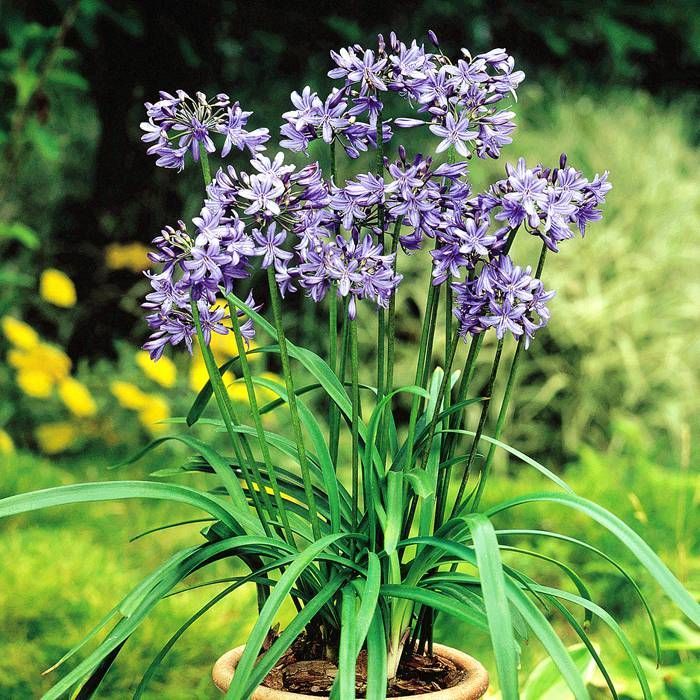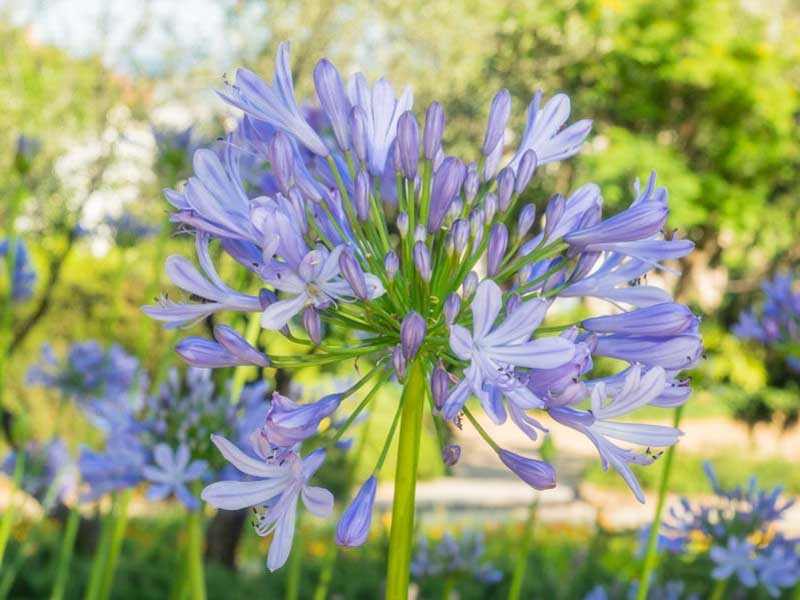How to Plant and Maintain Agapanthus in Your Yard
How to Plant and Maintain Agapanthus in Your Yard
Blog Article
Unleashing the Secret to Successful Agapanthus Farming: Tips and Techniques for a Flourishing Yard
In the world of gardening, growing agapanthus effectively needs a critical technique that includes numerous facets of plant treatment. With mindful interest to detail, one can open the keys to nurturing these spectacular blossoms, causing a yard that grows with beauty and vibrancy. By recognizing the nuances of agapanthus farming, one can produce an environment where these plants flourish and bloom generously. In the complying with conversation, we will check out important pointers and tricks that will certainly assist you in the direction of a flourishing agapanthus garden, using insights right into ideal practices, dirt conditions, sprinkling techniques, and a lot more.
Planting Agapanthus: Finest Practices
When growing Agapanthus, proper soil prep work is important for ensuring successful growth and advancement of these attractive blossoms. Agapanthus, frequently recognized as Lily of the Nile or African lily, prospers in well-draining soil with a slightly acidic to neutral pH level - Agapanthus. Prior to planting, it is important to modify heavy clay dirts with raw material such as compost or peat moss to enhance water drainage and give essential nutrients for the plants
To plant Agapanthus, select an area that receives full sunshine to partial color, as this will certainly promote healthy and balanced growth and abundant blooming. Dig a hole twice the diameter of the plant's root sphere and put the Agapanthus at the very same deepness it was formerly growing. Delicately backfill the hole with dirt, pushing down firmly to get rid of any kind of air pockets around the roots.
Water the newly grown Agapanthus thoroughly and continue to maintain the soil evenly moist, particularly during the plant's active expanding period. Agapanthus. Using a well balanced plant food once a month can additionally sustain the plant's development and blooming. By complying with these finest methods for planting Agapanthus, you can create a spectacular display of these exciting blossoms in your garden
Suitable Soil Conditions for Agapanthus
For ideal development and flowering success of Agapanthus plants, making sure the soil conditions are suitable is essential. Agapanthus thrives in well-draining soil with a somewhat acidic to neutral pH degree varying from 6.0 to 7.0. This kind of soil enables adequate water drainage, preventing waterlogging which can bring about root rot. To improve soil water drainage, think about adding raw material such as garden compost or peat moss when preparing the planting site. In addition, Agapanthus likes dirt that is abundant in nutrients, so integrating a well balanced fertilizer throughout the expanding season can advertise healthy and balanced growth and vibrant flowers.

Watering and Feeding Tips
To make sure healthy and balanced development and vibrant blooms, proper watering and feeding strategies are vital for successful Agapanthus farming. Agapanthus plants benefit from normal watering, specifically throughout the expanding season. It is recommended to water deeply when a week, making sure the dirt is damp yet not soaked. During hot weather or in pots, even more regular watering may be necessary to prevent the dirt from drying entirely.
When it concerns feeding Agapanthus, a balanced plant food with equal components nitrogen, phosphorus, and potassium can be used in the spring to promote healthy development and flowering. Slow-release plant foods are perfect for providing nutrients progressively over a prolonged period. Stay clear of over-fertilizing, as this can cause extreme vegetation growth at the expenditure of blossoms.
Furthermore, including natural matter like compost into the dirt can enhance nutrient degrees and enhance dirt structure, helping in the overall health of check here the Agapanthus plants. By adhering to these watering and fertilizing ideas, garden enthusiasts can ensure their Agapanthus plants grow and generate spectacular screens of blossoms.
Pruning and Deadheading Strategies
Proper pruning and deadheading methods play a vital role in maintaining the health and appearances of Agapanthus plants, complementing the crucial practices of watering and fertilizing for successful cultivation. Trimming Agapanthus involves eliminating invested blossom heads, yellowing or dead leaves, and general shaping of the plant to advertise far better growth. Deadheading, the procedure of getting rid of faded blossoms, not only improves the plant's appearance yet also urges more blooming.
When deadheading Agapanthus, it is suggested to trim off the flower stem at the base utilizing sharp, tidy shears. This procedure reroutes the plant's energy from seed manufacturing back into root and foliage growth, advertising a much healthier and extra durable plant. Normal deadheading can expand the growing duration of Agapanthus and avoid self-seeding, which can bring about look at this website congestion.
In regards to trimming, Agapanthus usually take advantage of a light trim after blossoming to tidy up the plant and motivate fresh development. Reducing back the invested blossom stems and getting rid of any kind of damaged or dead foliage helps preserve the plant's vigor and general look. Nonetheless, it is important to stay clear of reducing right into the crown of the plant, as this can compromise its health.

Protecting Agapanthus From Pests and Diseases
Carrying out reliable pest and condition management techniques is crucial to securing the wellness and Extra resources vitality of Agapanthus plants in cultivation. One typical insect that affects Agapanthus is the Agapanthus borer, a caterpillar that tunnels into the plant, triggering damage to the flowers and fallen leaves.
Along with pests, Agapanthus are vulnerable to conditions such as origin rot and fungal leaf spots. These concerns can frequently be prevented by guaranteeing proper drainage and avoiding overwatering. If signs of disease show up, affected components of the plant need to be without delay gotten rid of to avoid additional spread. Fungicides might also be made use of as a therapy step, adhering to the producer's guidelines meticulously. By remaining alert and addressing pest and condition problems without delay, garden enthusiasts can aid their Agapanthus grow and prosper.

Final Thought
To conclude, successful growing of agapanthus calls for appropriate planting methods, suitable soil problems, sufficient watering and fertilizing, regular pruning and deadheading, and protection from parasites and conditions. By complying with these techniques and ideas, gardeners can make certain a growing yard filled with gorgeous agapanthus flowers. Agapanthus. Bear in mind to preserve regular treatment and attention to detail to promote the wellness and longevity of these stunning plants
When planting Agapanthus, appropriate dirt prep work is essential for making certain successful development and growth of these lovely flowers.Water the recently planted Agapanthus thoroughly and proceed to keep the dirt evenly wet, especially during the plant's active expanding season.For optimal growth and blooming success of Agapanthus plants, making sure the dirt conditions are optimal is important. When hair transplanting or growing Agapanthus, guarantee the dirt is well-prepared to supply the necessary foundation for the plants to establish themselves successfully. One typical bug that influences Agapanthus is the Agapanthus borer, a caterpillar that tunnels into the plant, creating damage to the flowers and fallen leaves.
Report this page